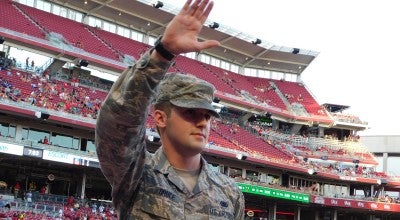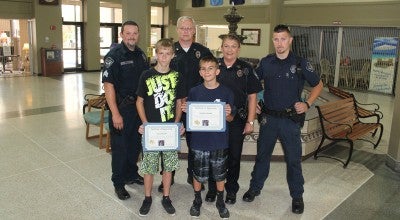MU professor remembers ‘March on Washington’
Published 10:01 am Friday, August 23, 2013
On Friday, Aug. 27, 1963, Huntington, W.Va. resident Phil Carter took the ride of a lifetime.
Carter, a Huntington native, worked at Lake Vesuvius as part of the Job Corps in the 1960s.
He was one of 38 people who boarded a Washington, D.C.-bound bus at J.W. Scott Community Center in Huntington. It was the day before the March on Washington for Jobs and Freedom.
“I was so poor, I didn’t even have enough money to get on the bus,” he recalls. “Marion Gray, who was considered the ‘mother’ of the civil rights movement in the tri-state area, told me to get on anyway.”
Carter admits he had no idea what he would soon experience as a 20-year-old college student.
“I remember when we got there I just saw all these people moving,” he said. “I stood slightly to the right of the podium in front of the Lincoln Memorial and watched as all these people just kept coming.”
Overall, 250,000 people marched on Washington that day, the largest such gathering at our nation’s capital at the time.
Although he listened to Dr. Martin Luther King Jr.’s “I Have a Dream” speech, Carter said he was there more to hear Congressman John Lewis. Lewis was head of the Student Nonviolent Coordinating Committee (SNCC), of which Carter was part.
“I more so went to hear the young people and Congressman Lewis speak,” Carter said. “I do recall them making Lewis change his speech because the mainstream folks — the NAACP and such — thought it was too radical.”
The SNCC was part of the “Big Six,” the prominent leaders of some of the civil rights organizations active during the height of the civil rights movement, who were instrumental in the organization of the march.
King’s speech that day touched Carter, but he says what was more powerful to him personally was King’s famous “Letter from Birmingham Jail” that was published prior to the march.
“That letter was and is an extremely important document,” Carter said. “One can read Dr. King’s speeches on the Internet, in books, magazines and newspapers, but what motivated so many people to make the sacrifice and go to Washington, D.C., was the quest for civil rights right here in this area, which a lot of people don’t realize even took place.”
Carter remembers people being on the streets in Huntington nonviolently protesting public and private establishments’ segregation policies.
“Many places, like community pools, were public,” Carter said, “but the public had a color to it. People were being jailed, beaten and cattle-prodded right here where we live.”
A week prior to the march in Washington, Carter attended the “March on the Southern Governor’s Conference” at the Greenbrier Resort.
“A caravan of cars converged on the Greenbrier,” Carter remembers. “We wanted to show our support for (West Virginia) Gov. William Wallace Barron and how he was different than (Alabama) Gov. George Wallace.”
Carter has marched a lot in his life. Aside from the Greenbrier and the first march in Washington, he attended the 20th anniversary of the March on Washington in 1983 and the Million Man March in 1995.
Carter works as a social work professor at Marshall. Physical ailments will keep him from attending the 50th anniversary march in body, but he’ll be there in mind and spirit.
“When I marched in 1963, I went with a hope for something better, for better days ahead and to rejuvenate people’s spirits,” he said. “I encourage a whole new generation to go there now and stand for me.”





